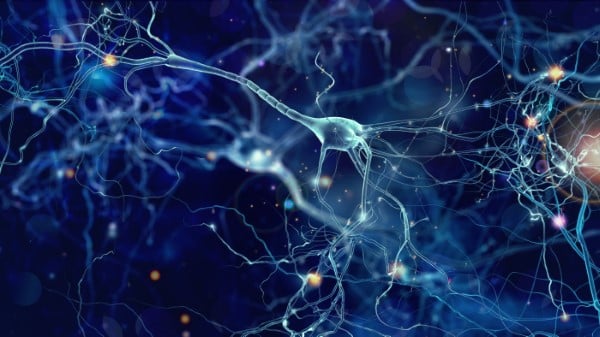- 02 9712 1736
- [email protected]
- 212 Great North Road, Five Dock, NSW 2046
- Open 7 days a week
The human nervous system, we all have one, however do you know what your nervous system does? Are you curious about how your body communicates internally? Well as you may have guessed, it is through your nervous system. Your nervous system effortless manages your complex internal communication. Telling each part of your body what it should be doing at every moment in time. In this article, we’ll cover your nervous systems main parts and essential functions.

The nervous system is your body’s sophisticated communication network. It is responsible for transmitting signals between the different parts of your body and your brain. Your nervous system is comprised of two major regions. These are the central nervous system and the peripheral nervous system. These two systems work together to control a wide range of your bodies functions, from voluntary actions like walking and speaking to involuntary processes such as breathing and heartbeat.
Expanding on this your nervous system is responsible for three primary functions, which include:
These functions are essential for processing and responding to stimuli in your environment. These stimuli can be both external stimuli such as a cold wind against your skin, or internal stimuli, such as after running telling your heart to beat faster. These intricate process ensures that our bodies react appropriately to both your internal and external stimuli, maintaining balance and facilitating your survival.


The central nervous system (CNS) is a crucial part of your nervous system, consisting of your brain and spinal cord. These two important components are protected by your skull and vertebrae respectively. However with how important the CNS is to your life. The CNS is further cushioned by a strong connective called your meninges and cerebrospinal fluid, helping further to prevent injury. Think of your CNS serves as the main control centre for your body, processing information and coordinating activities. Without it you couldn’t function.
Your brain and spinal cord are meshed together, so they can work to control your various bodily functions and responses. Your brain processes and interprets sensory information, up to eleven million pieces of information per second. While your spinal cord acts as the conduit for signals sent by your brain to the rest of your body. A common myth is that humans only use 10% of their brains. This misconception undermines the incredible complexity and efficiency of the human brain, which is active and engaged in numerous functions at all times.

The human brain is often compared to a computer due to its role in controlling thoughts, feelings, movements, and vital functions such as digestion and heart rate. It is divided into three main sections: the forebrain, midbrain, and hindbrain, each responsible for different functions.

The brain is divided into three main parts:
The cerebrum, the largest part of the brain, comprises the cerebral cortex or ‘gray matter,’ which handles higher brain functions such as thought and action. When information processed in the cortex is deemed important for long-term storage, it is passed to other regions like the hippocampus and amygdala.
The average adult human brain weighs about 1.3 to 1.4 kilograms (approximately 3 pounds), yet its capabilities are vast and awe-inspiring. Basically your brain is incredible and essential for life. Each year we learn more and more about the capabilities of the human brain and the crucial role it plays in our moment to moment existence.
The spinal cord, extending approximately 18 inches in length and half an inch in thickness, is a vital part of the central nervous system. It serves as the main pathway for transmitting information between your brain and the rest of your body.

The spinal cord is divided into three sections:
Each section is responsible for sending nerves to specific parts of your body. The division of your spinal cord into sections, ensures that motor commands from your brain reach the appropriate muscles and organs of your body. While also ensuring sensory information from different parts of your body is relayed back to your brain for processing, quickly. The spinal cord’s role in this bidirectional communication is crucial for maintaining bodily functions and responding to your environment.

The peripheral nervous system (PNS) extends beyond your central nervous system, connecting the brain and spinal cord to the rest of your body. Your PNS is essential for sensory input, movement, and autonomic processes. The PNS is divided into two subsystems: the somatic nervous system and the autonomic nervous system. This includes your enteric nervous system, or your gastrointestinal system.
Peripheral nerves exit or enter your spinal cord so important information can be relayed directly to and from your brain to your limbs and organs. So lets further explore the somatic and autonomic nervous systems, detailing their distinct roles and functions.
The somatic nervous system is responsible for both relaying sensory information from your eyes, ears, skin and muscles to your CNS. As well as sending orders from the CNS to contract and relax your muscles to allow for voluntary muscle movements. This allows for control of activities that are consciously performed, such as walking, typing, or lifting objects. Motor commands travel through your motor neurons, part of the PNS, to reach the target muscles, enabling you to have precise and coordinated movements.
The autonomic nervous system (ANS) regulates organ systems and maintains homeostasis by controlling involuntary functions such as your heartbeat, digestion, and respiratory rate. It operates automatically, without conscious effort, ensuring that your critical life-sustaining processes are continuously managed.
The ANS is divided into the sympathetic and parasympathetic systems. When the sympathetic nervous system kicks in, it prepares the body for stressful situations by increasing heart rate and blood pressure, while the parasympathetic nervous system kicks in to calm the body down after the stress has passed. Together, these systems balance your body’s involuntary actions, ensuring stability and proper function.
If you were to take your nervous system out of your body it would look like a super highway of pathways running all over your body. This intricate network is made up of building blocks called neurons. Neurons, or nerve cells, are the fundamental units of the nervous system. They are responsible for receiving sensory input from the external world, processing this information, and sending motor commands to muscles. The human brain contains approximately 100 billion neurons, each playing a critical role in defining your personal identity to facilitating complex behaviours.

When you start to learn about neurons, you quickly realise they are complex cells, performing important functions. Neurons transform and relay electrical signals, creating pathways in the brain that affect thinking, learning, movement, and behaviour. In this next section we will look a little deeper into the structure of neurons and the different types of neurons that carry out these essential functions.
A neuron comprises three main parts:
Neurons are categorized based on their functions. There are three main types of neurons:
This division of labour ensures that the nervous system can efficiently process sensory input and at the same time execute motor commands.

The nervous system operates through a complex electrochemical process, with neurons conveying information both electrically within the cell and chemically between cells. Inside neurons, information is transmitted via electrical impulses. When an electrical charge, or action potential, travels along a neuron, it reaches a synaptic cleft where neurotransmitters are released.
These neurotransmitters bind to receptors on the next neuron, continuing the transmission of information. This process of electrical and chemical signalling creates networks that are essential for:
Understanding this process helps us appreciate the intricate workings of the nervous system.
Sensory pathways begin with sensory receptors that detect stimuli both internally and from your environment. These signals are then converted into electrical signals. These signals are carried by sensory neurons to the central nervous system for processing. For instance, sensory receptors in the skin can detect:
These signals are then sent to your brain for interpretation. Where your brain will determine how you would like to respond.
Some other examples are your olfactory cells in your nose, which react to smells in your environment. They then send messages to your brain. While light entering the eye is transformed into nerve signals by your retina, which is then transported by your optic nerve to your brain. This complex network of sensory pathways ensures that we can perceive and respond to our environment accurately.
Motor pathways involve neurons transmitting motor commands from your brain to your muscles, initiating movement. As we discussed earlier your CNS transport the messages from your brain to your PNS. Your peripheral nerves system then delivers these commands to your muscles, enabling voluntary actions like walking or picking up objects. This coordination between your brain and your muscles is essential for all motor functions.
Maintaining a healthy nervous system requires a holistic approach, which many aspect of your life effecting your nervous system over time. Here are some key factors to consider:

Chronic stress negatively impacts the nervous system, but techniques like yoga, meditation, and deep breathing can help manage stress. Regular exercise, such as walking, swimming, and yoga, enhances blood circulation, which supplies essential nutrients and oxygen to nerve cells. Quality sleep is also essential for nervous system repair and rejuvenation. Limiting alcohol and tobacco usage is important as these substances can damage nerve cells and impair nerve function. As you can see there are many factor which all come together to maintain a health nervous system and a health life.
Thousands of conditions can affect the central nervous system, including common disorders such as multiple sclerosis and Parkinson’s disease. Multiple sclerosis is characterized by symptoms like fatigue, trouble walking, and vision problems. Diagnosing multiple sclerosis involves ruling out other conditions and examining symptoms, as there is no single test for the disease. Both genetic and environmental factors contribute to the development of multiple sclerosis.
Parkinson’s disease primarily causes tremors, slow movement, muscle stiffness, and balance problems. Diagnosis is often clinical and may involve a DaTscan to show evidence of dopamine-producing cell loss. Similarly, genetic and environmental factors play a role in the development of Parkinson’s disease.
Both multiple sclerosis and Parkinson’s disease require supportive therapies such as physical therapy to manage symptoms and maintain functionality. These therapies help improve the quality of life for those affected by these disorders. Check with your local health care provider how they can help.

Understanding the nervous system is crucial for appreciating how your body functions and responds to your environment. From the central and peripheral nervous systems to the roles of neurons and nerve pathways, each component plays a vital role in maintaining your health. By adopting healthy lifestyle practices, you can support your nervous system and reduce the risk of common disorders. Stay proactive, stay informed, and take care of your nervous system to enjoy a healthier life.
The main parts of the nervous system include the central nervous system (the brain and spinal cord) and the peripheral nervous system. These two components work together to control the body’s functions and respond to stimuli.
The nervous system works through a complex electrochemical process, with neurons conveying information both electrically within cells and chemically between cells. This allows the body to transmit and receive signals efficiently.
The autonomic nervous system regulates organ systems, controls homeostasis, and manages automatic functions such as breathing and digestion, ensuring the body’s internal environment is stable and functioning properly.
Common nervous system disorders such as multiple sclerosis and Parkinson’s disease require supportive therapies to manage symptoms and maintain functionality. These disorders can have a significant impact on daily life.
To maintain a healthy nervous system, ensure a balanced diet with omega-3 fatty acids and vitamin B12, stay hydrated, manage stress, exercise regularly, prioritize quality sleep, and limit alcohol and tobacco intake.
Forest Lodge, Annandale, Glebe, Leichhardt, Balmain, Haberfield, Canada Bay, Rozelle, Rodd Point, Wareemba, Stanmore, Petersham, Lilyfield, Hunters Hill, Enfield, Cabarita, Mortlake, Rhodes, Burwood Heights, Birchgrove, Gladesville, Huntleys Point, Abbotsford, Ashfield, Croydon Park, Croydon, Chiswick, Russell Lea, Burwood, Strathfield, Concord, Drummoyne, North Strathfield, Liberty Grove, Dulwich Hill, Lewisham, Camperdown, Ashbury, Homebush, Homebush West, Woolwich, Henley, Summer Hill, Sydney Olympic Park


About
Five Dock Osteopathic & Chiropractic is located in Canada Bay, in Sydney’s Inner West. Servicing suburbs including Burwood, Croydon, Drummoyne, Five Dock, Haberfield, Concord, Abbotsford, Chiswick, Leichhardt, Wareemba, Russell Lea, Summer Hill, Strathfield.
Clinic hours
Monday, Tuesday, Thursday 7AM – 7PM
Wednesday, Friday 7AM – 6PM
Saturday 7AM – 2PM
Sunday 8AM – 2PM
Contact details